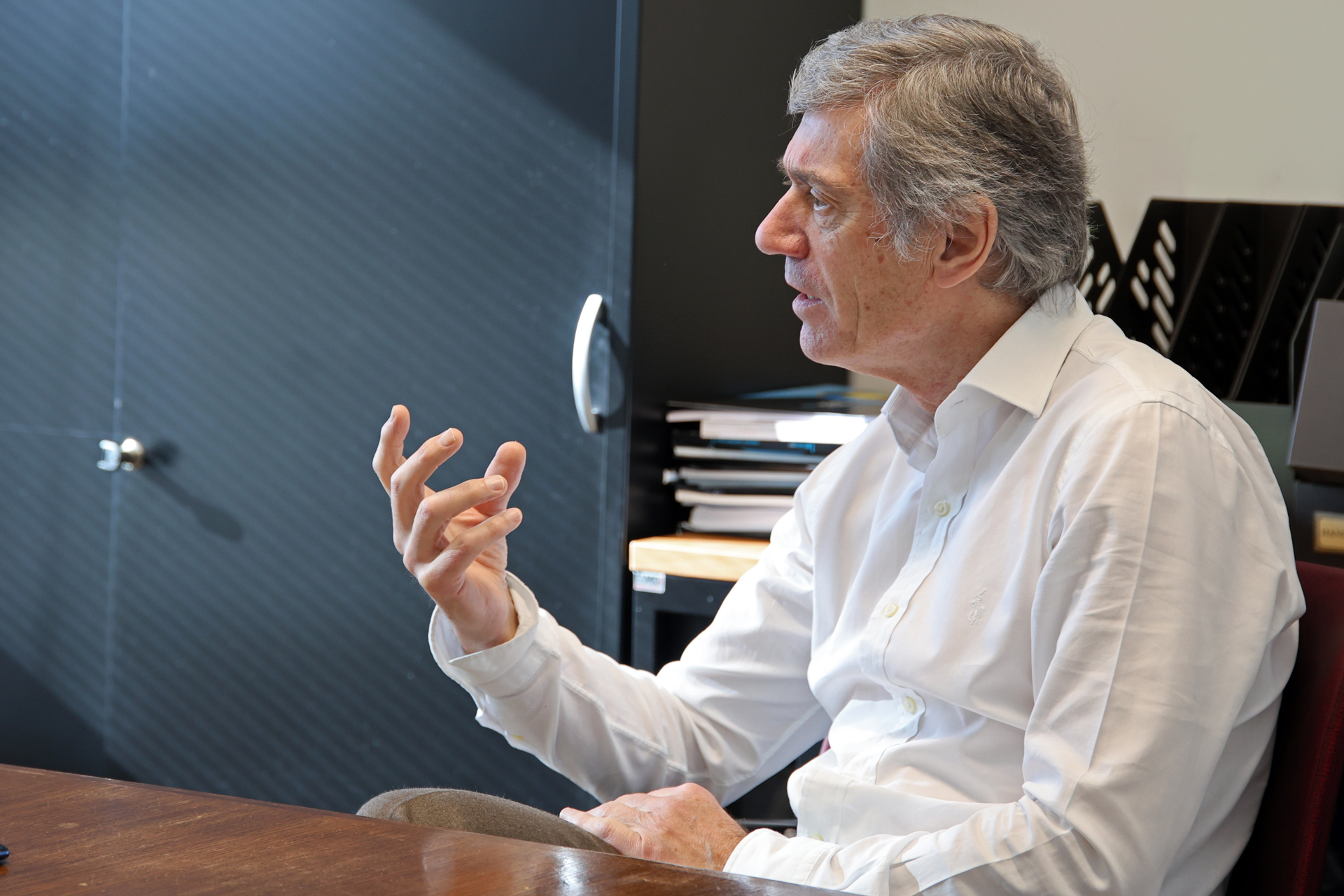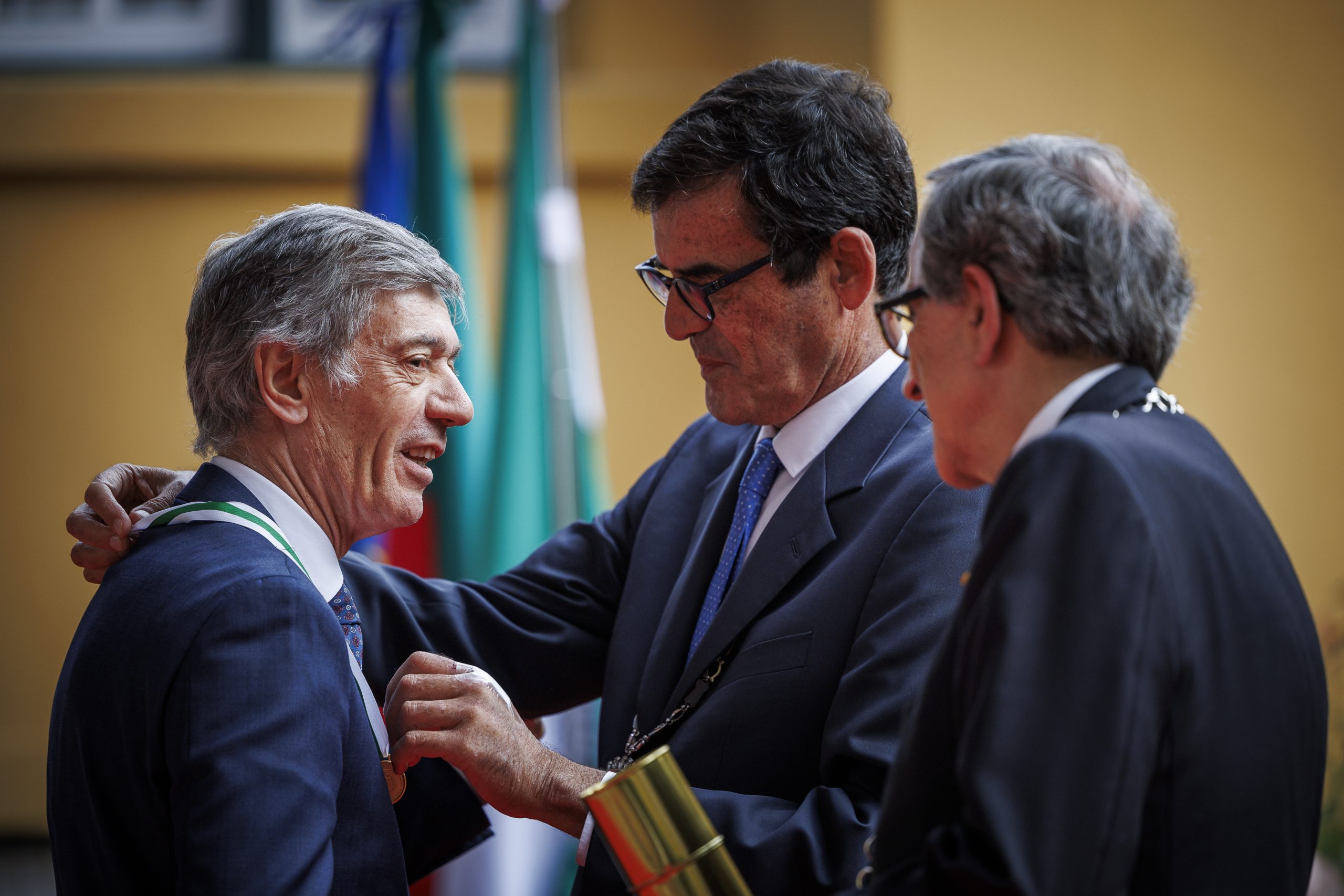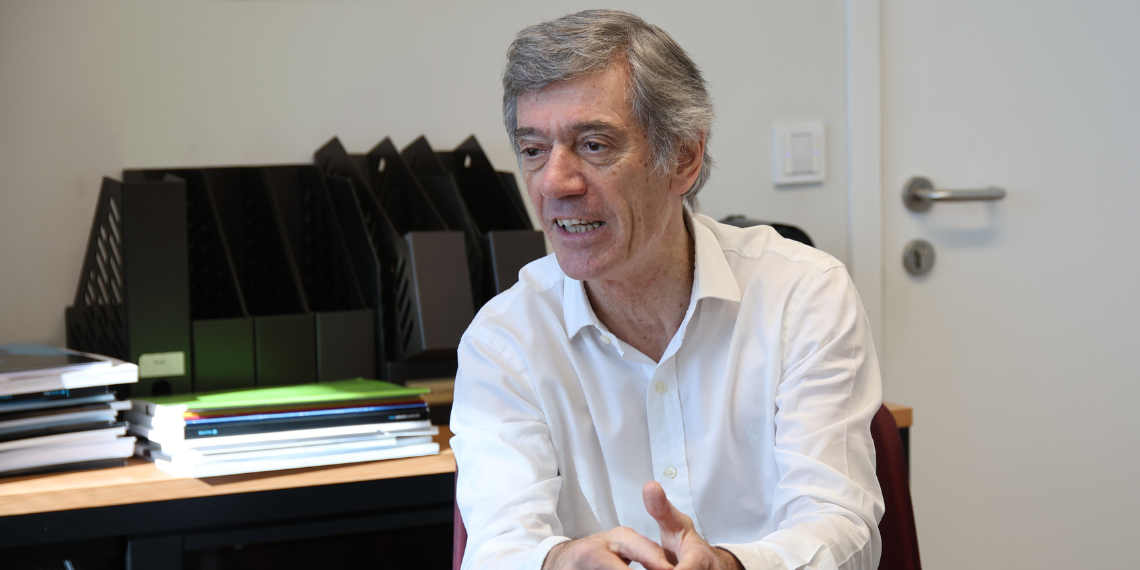José Manuel Mendonça is the first guest of the new BIP section. It’s called “On a Personal Note”, and it aims to make a portrait of those who are part of the INESC TEC community. Every two months, a new guest.
Porto, 1977. José Manuel Mendonça, a young engineer, opens the pages of Expresso [newspaper]. What he reads is not encouraging: rampant inflation and the devaluation of the Escudo, common themes printed on those pages. The news of a free country gave way to the difficulties of a democracy taking its first steps. Supposedly, the IMF will land in Portela. It’s a fast-paced yet unstable country. The newly graduate ends up in the jobs pages. They feature a repeated sentence: “looking for engineers with five years of experience”. “There were no job opportunities. It was alarming”, he recalled. That’s the motto. An opportunity comes up in Switzerland and “the world opens up” to him. Then, Denmark; and England, later. But, in the end – and at the beginning – it’s Porto; and INESC, which is now INESC TEC.
José Manuel Mendonça was always on the move. The restlessness, curiosity and “creative spirit” that emerged in primary school (Esmoriz), and in the Alexandre Herculano high school (Porto), influenced a path that aimed to become an antidote of what was mentioned in the newspapers.
Hence, it’s right to affirm that INESC materialised as a halt. José Manuel Mendonça was finishing his PhD in London, in 1980-something. People told him about an organisation associated with the university “with bold people, who wanted to do things differently, and change the country”. It was his first contact with the institution that would become his home – first, for 10 years, and then for almost 20 more years. “At the time, INESC’s motto was ‘Vencer o Adamastor’. It translated into the will to overcome the inability and the self-limitation of the country, and to overcome the absence of a greater ambition that we witnessed at the university”. By this time, he had already internalised the “Being Strong to Be Useful” of Vietnamese martial arts, which he had been practicing in Porto for well over a decade.
Mode: self-improvement
“We needed to do more”, he recalled. He did – and he will keep on doing so. In April, he will entrust the reins of the Board of Directors (CA) at INESC TEC, a position he has held since 2005, as Chairman; however, the Professor Emeritus of the Faculty of Engineering of the University of Porto (FEUP) does not anticipate a future “in slippers, sitting on the recliner”. “I will remain connected; we will hand over the power, but that does not mean that I cannot contribute to INESC TEC, to science, to the country. I no longer picture myself in executive or management positions. I wish to keep contributing to science and innovation, and to public policies – through strategic large-scale projects with impact. I appreciate a good challenge, if the goal is ambitious, positive and useful”.
We asked a man used to looking ahead to revisit the past; and the idea we get is that we could’ve use more time. Professor Emeritus of the Faculty of Engineering of the University of Porto, President of the National Council for Science, Technology and Innovation, former member of the administration of the Ilídio Pinho Foundation and the Innovation Agency – “I was immersed in a reality in which I had to learn and understand multiple areas”, he pointed out.
“I have always had the need to feel useful, to do relevant things and to improve myself. My journey during a significant part of my life was one of self-improvement, focus and discipline – there was even a time when I wrote pieces on the ethical and philosophical bases of martial arts, and Zen Buddhism. The idea of self-improvement was something that always seduced me”, he mentioned.

The dojo and a different outlook
A quest that started early on. As a son of an engineer “of culture, with a deep world understanding”, José Mendonça grew up in a middle-class family. His father was vital to his experiences and environment: “we’re not rich, nor were we poor; we managed to get by”. His grandmother, an elementary school teacher, did not exempt him from a strict, demanding, almost ‘Spartan’ education – “I usually say that, in the second grade, I already knew all about fourth-grade grammar and arithmetic”, he stated.
His parents invested in education – also relying on Europa América books on hidden shelves: José Mendonça got to know Camus, Sartre, Somerset Maugham, or Hemingway before the age of 17; moreover, he did not miss a single episode – and the ethics lessons – of the anthology series “Kung Fu”, the adventures of a Shaolin monk played by David Carradine. From this period, he recalled a “transformative” experience: in the summer of 1968, he further “explored” the world. He spent five weeks at his father’s friend’s house, in Paris, and he witnessed a city longing for Freedom. He also found out “a world of unbelievable differences”. “It was a brutal impact”, he explained.
Shortly after returning from Paris, he consolidated the ideas of self-improvement, focus and discipline. The year was 1970, and the Soshinkai Academy dojo granted him access to Master Tran Huu Ha, expert in Oriental martial arts. “To practice martial arts, we needed a special license, issued by the Martial Arts Directive Commission – an agency of the Department of National Defence”; obtaining it “was quite complicated”. In order to join the Academy, new members needed a good word by someone who was already there, “ensuring” that the newcomer had the moral principles required and would not “cause trouble”. José Manuel Mendonça joined the Academy; more than five decades later, he continues to explore this passion, while disseminating it – he is Master of Việt Võ ĐÅo and President of the General Assembly of the Federation of Vietnamese Martial Arts.
He started this journey way before another important path: University. The Electrical Engineering course at the Faculty of Engineering of the University of Porto, between 1972 and 1977, follows a smooth academic path. However, in the country undergoing deep changes “there was a state of political tension at the university; and those who failed two years in a row went to the army, and then to the war overseas. The university was very elitist, the number of people who had access to it was small and many gave up”, he stated.
José Mendonça was not one of the students with the top grades. Who was to “blame”? “Some of my colleagues were way smarter – many became close friends, and researchers at INESC TEC; in addition, I had other things to keep my mind ‘busy’”, he mentioned. Besides martial arts – music. He was part of a garage band that served as a stepping stone for further exploring: “I remember playing as a support act of the rock band that Rui Reininho had before GNR – Anar Band, I think; we played at a graduation party, at the Colégio Nossa Senhora da Paz”.

DHL won’t wait
At the end of the course, and after reading several newspapers looking for a job, he went to Switzerland. The drive behind a career of constant restlessness. At the end of his internship at Brown, Boveri & Cie (Zurich), he was offered a PhD grant at ETHZ. He rejected it. “At the time, I was already dreaming about wind power; doing a PhD on electric machines seemed to me a thing of the past, unimaginative, and dark.” Next destination: Denmark. He witnessed an image of the future: it was 1978, and 25% of the electricity generated by the country came from wind power. He returned to Portugal, to join the project of the Sines Thermal Power Plant, by EDP; he started his teaching career at FEUP, “but he did not disregard” renewable energy sources and wind power – an area in which he received his PhD, at the Imperial College (London, 1980s). The idea of living the university beyond itself, in its connection with society and the impact on the economy, was already germinating; and INESC appears as “the answer”.
“I met the dynamics of an institution in continuous improvement, always evolving, improving to be useful to the country. INESC TEC evolved from the DNA of the parent institution, INESC; it preserved this DNA, but it evolved, it became larger, to have more impact; inevitably, it became even more complex. The reason I felt connected for so long is that the institution has many values that I appreciate; I always felt very good here”, he explained.
He recalled the collective selflessness of a group of people in the 80s and 90s, who wanted to pave a new path without fear. An example of this heritage: European research projects. Since the beginning of the First Framework Research Programme in Europe, in the 1980s, INESC had been a partner in telecommunications, information systems or fibre optic projects; until “a great opportunity” emerged in the industrial sector – which the institution “could not be miss”. And now, a tale of broken printers and a race against time between Rua José Falcão [home of INESC Porto] and the airport – which reflects the spirit of the time.
“The applications, which were sent via DHL, were delivered to the airport; we’re talking about huge, printed dossiers. The complexity of the planning and the integration of information from the various European partners, together with our lack of experience, delayed the whole process; everything got tardy, and some misconfigured printers threatened all the work carried out up until that moment. We were forced to drive to DHL; I ended up committing countless traffic violations between INESC and the airport, because submitting the application for the first European project in the industrial area was paramount. And we were successful”, he stated. “We ended up becoming responsible for the technical coordination of the project – the first of many dozens in the industry sector”.
Porto – always Porto
José Mendonça finally settles in the Invicta. Almost instinctive, a memory of Porto as a place of arrival. Family, friends, Futebol Clube do Porto, Pedroto, Rodolfo and Oliveira, lifting the cup in 1978 – with more than “fifty years as an associate” – and of course, martial arts. Deep down, INESC TEC is an anchor: “I realised early on that I wanted to contribute even more, and that I could do it from here”.
And so, he did. He witnessed Porto grow and endow itself with an “entrepreneurial dynamism”, gaining weight in science, technology, and innovation, in areas like health, the sea and engineering – with FEUP, INESC TEC and INEGI in the forefront. “I remember that we, at INESC TEC, helped InvestPorto to attract Euronext, Natixis, Fraunhofer, Vestas, etc., showing that we had significant potential and competences, and that we welcomed good students, with top quality engineering”.
The quality in terms of people, in fact. José Mendonça recalled all those with whom he crossed paths here. He defined himself as a “creator”: “throughout my career, I think I have helped build organisations and people improve. Currently, the added value of organisations, companies – particularly, INESC TEC – are their people. None of this would have been possible without teamwork. I learned, as a researcher and as a chairman, that we always inherit something, like a legacy, which we will later bestow. What we received in 2005 from Pedro Guedes de Oliveira and his team, we now bestow to João Claro and his team (2024)”.
“I think I helped build an institution with capable, competent, bold, visionary people who want to feel useful; and who are also good people, favouring ethics and character, which is very important. They are the basis of this unique institution, in which I was no more than one of the many builders; I enjoyed building it and turning the university and research as vehicles that greatly contribute to the country. But I’m not alone in this institution; there are many others”.
And we will get to know them over the upcoming months.
Bedside table books:



 News, current topics, curiosities and so much more about INESC TEC and its community!
News, current topics, curiosities and so much more about INESC TEC and its community!